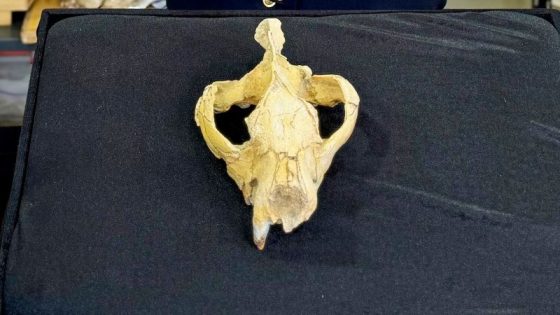On February 17, 2025, paleontologists announced a groundbreaking discovery: a nearly complete skull of a previously unknown species of apex carnivore, the hyaenodont. This ancient predator roamed the Earth around 30 million years ago, and its unique features could help scientists understand why these fierce creatures went extinct.
- Hyaenodonts were apex predators 25 million years ago.
- New species named Bastetodon syrtos discovered.
- Fossil found in Egypt's Fayum Depression.
- Bastetodon had powerful bite and unique snout.
- Fossil reveals insights into ancient ecosystems.
- Climate change contributed to hyaenodont extinction.
New Insights into Hyaenodonts: What This Discovery Means for Evolution
What can a 30-million-year-old skull teach US about ancient ecosystems? The recent discovery in Egypt offers a rare glimpse into the life of hyaenodonts, apex predators that once dominated their habitats. By studying the skull, scientists hope to unravel the mysteries surrounding their extinction and the environmental changes that led to the rise of modern carnivores.
Understanding the Role of Bastetodon in Ancient Ecosystems
The newly identified species, Bastetodon syrtos, provides crucial information about the hyaenodonts’ ecological role. This predator thrived in the tropical rainforests of the Fayum Depression, preying on early mammals like Aegyptopithecus, an ancestor of humans. Here are some key points about Bastetodon:
- Leopard-sized with a powerful bite.
- Unique shorter snout compared to other hyaenodonts.
- Adapted to a lush, tropical environment.
- Part of a lineage that dominated before modern carnivores emerged.
The Significance of the Hyaenodont Skull Discovery
This skull is not just a remarkable find; it is a window into the past. It allows researchers to analyze the animal’s muscle structure, brain size, and sensory capabilities. Such details are rare in carnivore fossils, making this discovery invaluable for understanding how these predators lived and thrived.
Comparative Analysis with Other Hyaenodont Species
Researchers are also comparing Bastetodon with another hyaenodont species, Sekhmetops, which was discovered over a century ago. This comparison helps establish evolutionary links and reveals how these creatures adapted to their environments over time.
Lessons from Extinction: What Hyaenodonts Can Teach Us
The extinction of hyaenodonts raises questions about adaptability and survival in changing climates. As scientists study these ancient carnivores, they gain insights into how modern predators might respond to current environmental pressures, including climate change and habitat loss.
In conclusion, the discovery of Bastetodon syrtos not only enriches our understanding of ancient ecosystems but also serves as a reminder of the delicate balance within nature. As we learn more about these fascinating creatures, we can better appreciate the evolutionary paths that have shaped the wildlife we see today.

































